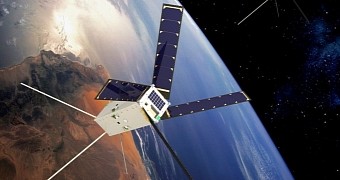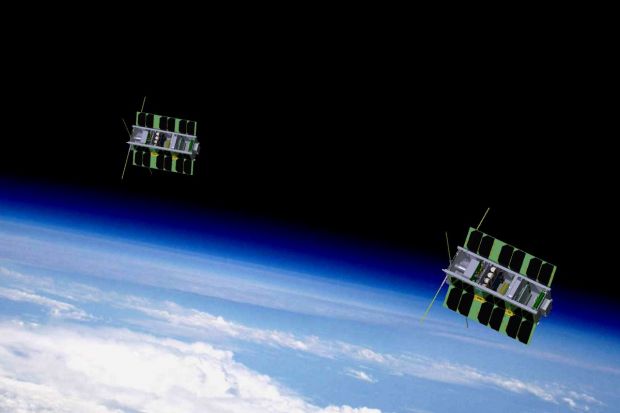During the International Festival of Technology 2015, TU Delft specialists from Netherlands presented their revolutionary nanosatellite propulsion system based on electrically heated ice.
CubeSat is an international initiative that developed several standard specifications for nanosatellites, all in a 10×10×10 cm cube format. TU Delft has used their experience for this new propulsion system by building satellites in the past. In 2008 they launched Delfi-C3, a 2.4 kg satellite without a propulsion system followed by Delfi-n3Xt which used a nitrogen-based propulsion system.
Their third step is to bring propulsion efficiency further. Called the DelFFI program, this project aims at launching two satellites, Delta and Phi in the same 10x10x30 cm format and have the maneuver in space based on their next-gen water-bsed propulsion system.
Involving 10 watts of electricity from a solar-powered battery to heat minuscule heating ducts on a circuit board. Water is then forced through the ducts and out of a small opening as Steam, propelling the satellite forward. Using this technology has several advantages as water molecules sublimate immediately from solid to gas at the low pressures in space, the effect would be the same.
However, because ice doesn’t mix with other gasses the same way it does in space the vapour from the heated ice should be heated twice in two separate chambers in order to have the needed pressure and then expelled on a duct 0.5 x 0.1 mm long.
The first results with the experimental ice rockets will arrive at the end of this year. If all is well, DelFFi’s next nanosatellite will carry this new propulsion system.

 14 DAY TRIAL //
14 DAY TRIAL // 

